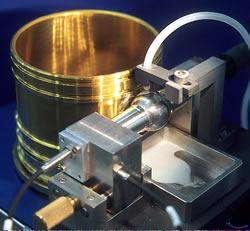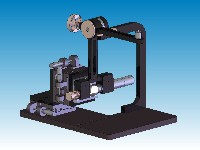The abrasion tester usually consists of a rotating sphere that is loaded onto the sample or component using a dead weight. An abrasive silicon carbide or diamond based slurry is dripped onto the wear interface while the sphere rotates. The abrasive slurry gradually wears away the coating. Once the abrasion test is complete the amount of abrasive wear is measured optically using the same method as the Calo / ball cratering test. The abrasion test can be used to measure the abrasive specific wear rate of [relevant-to-adsense type=”start”]thin film coating[relevant-to-adsense type=”stop”] deposited on coated test samples and actual components.
Correlation between abrasion test results and cutting tool life
Some authors have speculated that there is a correlation between the abrasive wear resistance of PVD coatings and the cutting life of PVD coatings on cutting tools. However it should be stated though that the lifetime of coatings on cutting tools is also dependent on other factors such as oxidation resistance and hot hardness (the hardness at elevated temperatures). Although as the use of highly abrasive materials such as carbon fibre becomes more widespread abrasive wear tests will become more common. There are currently applications in the aerospace industry that require extensive use of carbon fibre and titanium that if you attempt to machine with uncoated tools you have to resharpen the tool after cutting just one hole!


